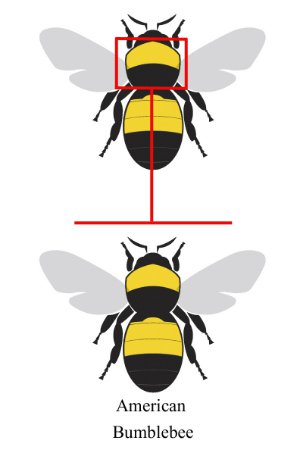Bumble Bee Identification
Nine bumble bee species are currently known to occur in Texas. That is not an overwhelming number to familiarize yourself with. Just think of all the species bird-watchers have to learn! With some patience and study, you should be able to familiarize yourself with the bumble bees that occur in the state. Like many other insect groups, accurate identification of bumble bee species can be a little tricky. Within a species, individual color patterns can vary. Male bumble bees often have color patterns that differ markedly from those of females (queens, workers). Don't let that intimidate you, however.
Observing Bumble Bees
While out collecting nectar and/or pollen, bumble bees can be easily observed. Away from their nests, individual bumble bees actively foraging on flowers are seemingly oblivious to our presence or fly away if approached to close. Bumble bees foraging on flowers are ideal subjects for digital imagery and documentation. As they are social insects, if you discover a bumble bee nest site, treat it with respect as they will defend their colony if disturbed.
Bumble Bee Anatomy
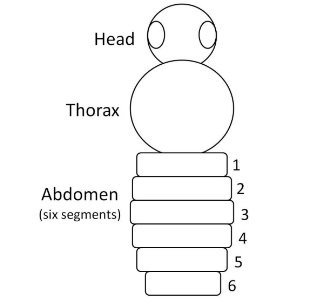
All bumble bees are relatively large, fuzzy insects. Their body is divided into three segments, the head, thorax, and abdomen. The abdomen of queens and workers is composed of six segments, whereas the abdomen of male bumble bees is composed of seven segments. Dense hairs, in varying combinations of black and yellow, cover most of their body. When attempting to identify a bumble bee, the features you will want to concentrate on most will be the pattern of black and yellow on the thorax and abdomen.
Mistaken Identity
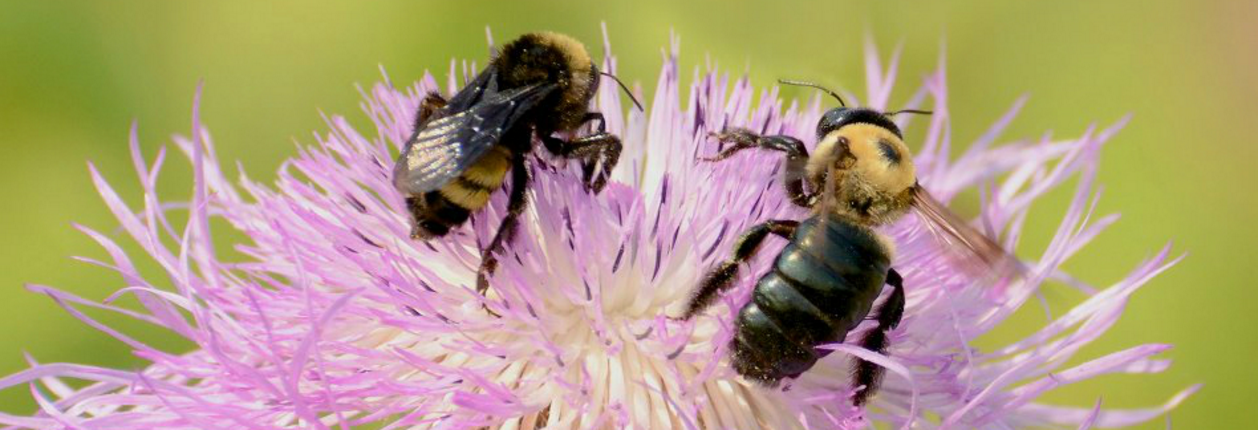
American bumble bee (left) and eastern carpenter bee (right). Courtesy of Jessica Womack.
A number of insects can be confused with bumble bees, chief among these is the eastern carpenter bee. This is a large, native bee with the same general shape as a bumblebee. It also has yellow hairs on its thorax. A major distinguishing feature between the two is the carpenter bee's abdomen. Carpenter bees have shiny, black abdomens with very few hairs, while bumble bees have furry abdomens. In the image above, the eastern carpenter bee is to the right and an American bumble bee is to the left. Texas contains a few other large species of carpenter bees that some also confuse with bumble bees (southern carpenter bee, valley carpenter bee)
Other insects that could be mistaken for a bumble bee include a day-flying moth, the snowberry clearwing and several species of robberfly (Laphria and Mallophora species). Unlike bumble bees which land and crawl over flowers to forage, the snowberry clearwing hovers in front of flowers to feed. The predatory robberflies that mimic bumble bees do not feed from flowers but rather prey on other insects, including bumble bees. Robberflies typically perch on vegetation, flying out as potential prey passes by.
Identification Tools
From spring into to mid-summer, female bumble bees will be the most commonly encountered sex. As a result, identification is simplified at this time of year with the absence of contrastingly patterned males. Once males emerge in mid- to late summer, the situation will become a little more difficult. Illustrations that depict the general color patterns of queen and worker bumble bees in Texas can be found below. A downloadable 11"x17" poster of these illustrations can be found here: Texas Bumble Bees Poster | PDF. These illustrations, while very simplified, provide an introduction into how the color patterns of females differ. Additional resources for identifying bumble bees can be found in the following online guides, Bumble Bees of the Eastern United States and Bumble Bees of the Western United States.
The first step in navigating these illustrations is assessing the thorax pattern of the bumble bee you observed. Selection of one of the three thorax types narrows your options as far as abdominal color pattern is concerned.
Thorax Type I. Completely yellow or nearly completely yellow thorax; a small bare area may be present in the middle of the thorax:
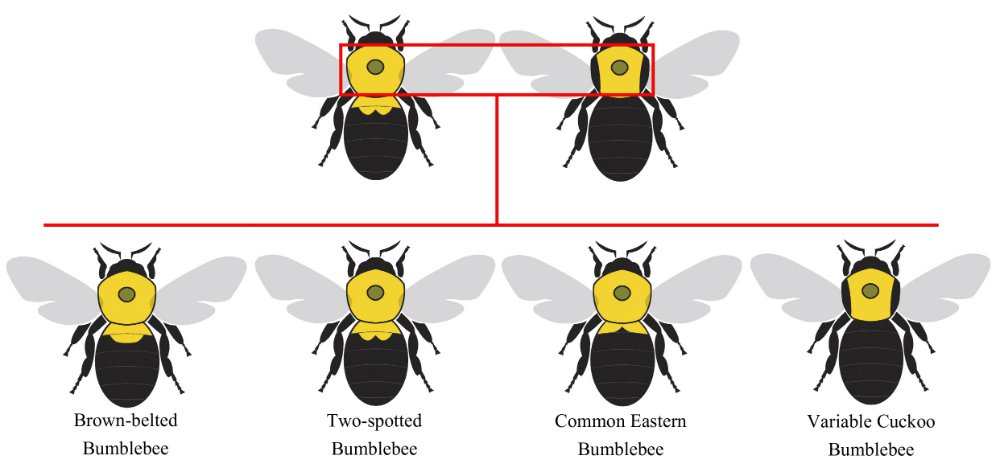
Thorax Type II. Thorax banded above and below with yellow; center black band present:
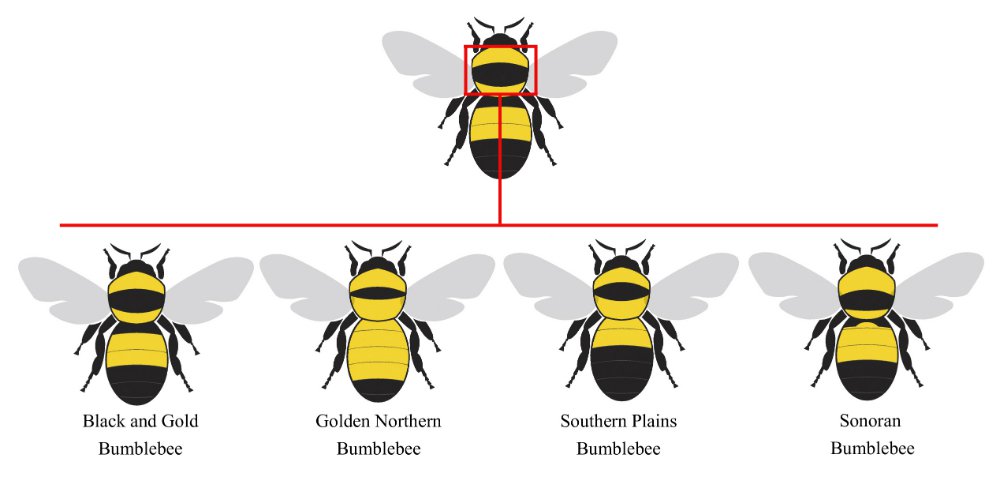
Thorax Type III. Upper portion of thorax banded in yellow, remainder black.
